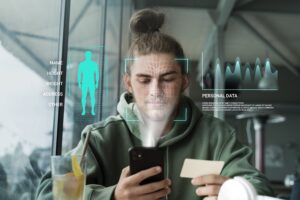Until maybe 20 years ago, people were fine with businesses that were in it for efficiency and strategy. Andrew Carnegie didn’t need to worry about maintaining above-average customer satisfaction. He just had to deliver at the right price. He was building a fortune and a monument to industry; that’s what mattered.
“What customer experience needs to entail is a radical decentralization of authority, which allows change to happen precisely where it needs to occur.”
Things have changed, big-time. Businesses that have maintained an above-average American Customer Satisfaction Index (ASCI) in their industry for the ten years between 2004 and 2014, have delivered 400% the returns to shareholders as those with average scores (McKinsey, Putting customer experience at the heart of next-generation operating models). In the last decade, through the Great Recession, mastery in customer experience has delivered a CAGR of 15%.
The shock factor is huge here, because it teaches us that customer experience has become the new master. Satisfy your customers, and grow rich. This is radically different than what business schools taught twenty years ago. Customer experience has always been a survey, an afterthought, a checkbox. Now it is your primary profit generator.
How to Let Customer-Centricity Take Over Every Layer of the Organization
Customer experience is the practice of making and maintaining happy customers, which requires much more than a good price. It requires, in a growing number of verticals, real innovation in the ways customers interact with you, growth not from a standpoint of efficiency or good Marketing, but in the way that your customers want.
The implications of this simple idea of putting what customers want first might be larger than you realize. This means that when designing or reimagining your services, customer feedback comes first, not as a step in quality assurance, but in the planning phase. Organizations are learning how to choose their focal points for change based on what customers want.
What customer experience needs to entail is a radical decentralization of authority, which allows change to happen precisely where it needs to occur.
From the C-Suite, to customer-facing employees, to the last IT support staff who dwells in the depths of the behemoth of enterprise, everyone, no matter how indirect their impact might be, everyone has a role to play. Everyone helps shape the customer relationship in some way that will ultimately become perceptible. Therefore, everyone needs to understand how they shape CX.
I am aware that what I am suggesting represents a fundamental shift in your organization. This is like an onion turning into an orange. Every cell must become juicier and sweeter to the taste.

Case Study: The Apple Marketing Philosophy
Let’s take Apple as a real-world example that has become the poster child for customer experience. Apple is one of those companies that has satisfied its customers consistently and been rewarded for its efforts.
Their formula for success occurs at multiple levels within the organization, and I will talk about just three. The first relates to their core value and operations: product design. Apple products, and the entire ecosystem, centers on the principle of usability. This central principle has impacted their strategic decisions, as well as the decisions of SVPs and even mid-level managers, down to each and every coder.
The other two are their strategic decisions, and their “packaging,” both of which I think can be described by their Marketing philosophy. One of the first investors in Apple, Mike Markkula, created “The Apple Marketing Philosophy” based on three principle ideas, which should make all of this easier to understand:
Empathy
“We will truly understand their [customers’] needs better than any other company.”
Focus
“In order to do a good job of those things that we decide to do, we must eliminate all of the unimportant opportunities.”
Impute
“People DO judge a book by its cover. We may have the best product, the highest quality, the most useful software, etc; if we present them in a slipshod manner, they will be perceived as slipshod; it we present them in a creative, professional manner, we will impute the desired qualities.”
If you have made it into a physical Apple Store, you know what I mean because the checkout system is different than any yet devised. Any team member can check you out via their handheld devices, and each team member is trained on customer experience. They know how to interpret subtextual clues, like your body language, and use subtextual cues, such as scratching their chin to suggest they are problem-solving.
These departures from the normative checkout experience took an incredible amount of thought to design, but they enrich communications, so that visiting their location is a collaborative, non-hierarchical, and possibly creative, problem-solving experience. And this imputes the same characteristics to their products.
Customer Experience Delivery Framework
I chose Apple as an example because it shows very neatly how philosophical choices made at the top level must be held and interpreted at every level of the organization and with all the life and energy of the original inspiration. Every employee needs to master different elements of what customers want.
But this idea can also pose a challenge to large organizations who need a gameplan, a way to understand how to transmogrify every single employee into a customer experience specialist.
So, I have divvied up “Everyone” into three categories to help make the nature of these changes more lucid.
Layer 1: Executive Role of Vision, Decentralization of Power and Verbal Support
Executives need to show support for CX and not just by moving forward with an initiative. They need to show their support verbally and constantly. They also need to, and this is the hardest part, take themselves out of the decision-making and let their people listen to customers and shape better interactions.
Layer 2: Internal Stakeholders
Managers across business units need to understand and participate in a CX initiative because this is where the major structural changes occur. SVPs, VPs and managers will need to understand how to identify elements of the customer journey that are causing dissatisfaction. Then they need the power to change back-end processes in order to improve the customer experience efficiently and impactfully. They will need to explore collaborations across traditional boundaries to get things done. And getting things done at this level energizes the rest of the system.
Layer 3: Not “Frontline,” Customer-Facing Employees
What kind of a metaphor is that, anyway, “frontlines?” Is our business engaged in an eternal World War with our customers? This battle-hardened nomenclature reveals so much about 20th century-type thinking, the type that keeps us from recognizing the importance of building enduring relationships.
Norms have to be examined and reframed or redefined. Customer-Facing employees need to throw out old ways of thinking and relearn the customer relationship. This requires knowledge and applied learning.
Each layer of the organization, and each function within each layer, presents unique challenges, different segments of the customer experience elephant. No one person needs to know everything, but everyone needs to know something. And more importantly, they need to practice it.
One Way to Deliver Decentralized CX Education: E-Learning Modules Scale Up Decentralized CX Learning
One of the first questions I get when I say that everyone needs to understand CX is: OK, but you are talking about a massive initiative buddy. If I have 400 employees, how can I possibly educate them all?
This article is more about the principle here than the delivery mechanism, so I won’t spend a long time talking about this, just long enough to show you your goal is within reach.
Think E-learning modules. These can be widely distributed to every nook and cranny of the organization. Not only are they are infinitely scalable, they are available in real-time, at the moment of influence.
What I mean by moment of influence, is it’s not a case of coming off the job and driving to a third-party classroom; employees can do it with their smartphones. We have discovered, with clients like Crowe Horwath, Reliant Energy and Konica Minolta, there is real power in real-time, bite-sized learning modalities.
Final Thoughts
With a change as comprehensive and foundational as customer centricity, we need to allow things to happen where and when they should happen. This means everyone in your organization needs to think and behave a bit differently in order to help you grow from an onion to its much tastier cousin, the orange.
If you don’t like oranges better than onions, then…well, maybe you should ask your customers which they prefer!
Sources
Roggenhofer, Stefan, Ewan Duncan, and Shital Chheda. “Putting customer experience at the heart of next-generation operating models.” McKinsey & Company. March 2017. Accessed January 29, 2018.






